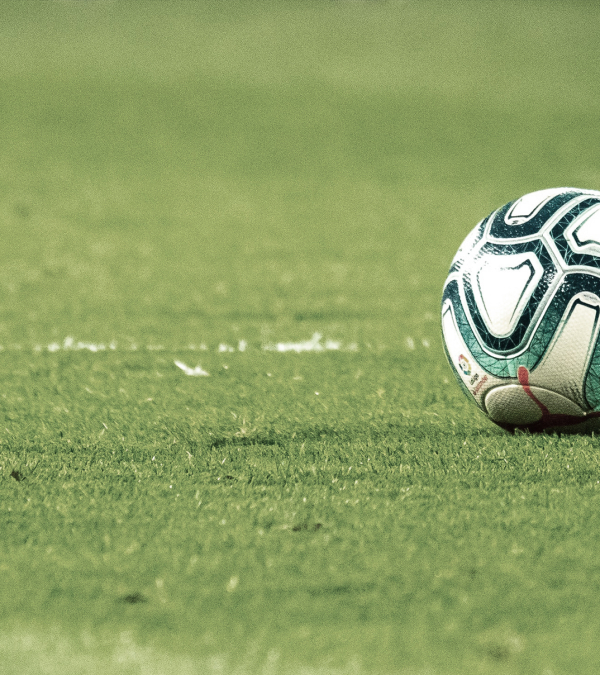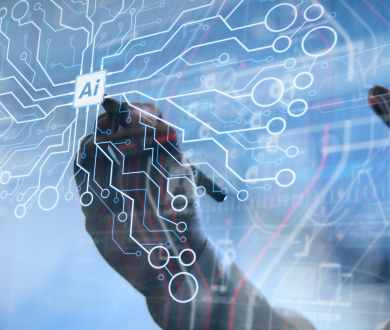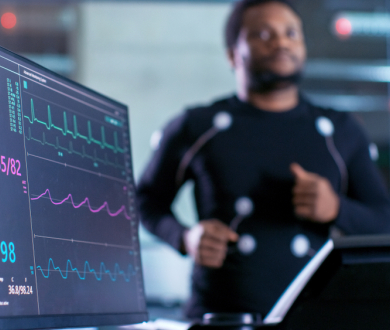
The Costs of the Prediction and Treatment of Elite Sports Injuries
A report released on 23rd March 2022 by the Howden Group[1] estimated that clubs in Europe’s top five leagues,
spent nearly €40m on a total of 501 Covid-19 absences alone as the pandemic’s long-term effects on players’ fitness continues to be a contributing factor to injury costs.
However, irrespective of the `contributing’ effect of the pandemic, the underlying numbers of potentially preventable injuries and the resultant cost to employers in general, remain a cause for concern. The uplift from the previous season was estimated at 20%. Excluding pandemic-related injuries would still leave the increase in the region of 10%. The report also stated that there were 2,524 injuries in the first half of the 2021/22 season at a cost to clubs of €279.49 million. If even half of that is not due to the pandemic that is a significant cost to bear.
Of the range of injuries from which footballers generally suffer, soft tissue injuries, in particular, are costing major league clubs millions of Euros in wages for assets unable to play. That is, in addition to lost prize money due to the consequential underperformance of the team. For example, in the English Premier League, the results of research carried out in 2020 indicate a clear relationship between the number of days out due to injuries and the difference between a team’s final position and their expected position when adjusted for overall squad value.
The researchers calculated that,
approximately 136 days out due to injury causes a team the loss of one league point, and that approximately 271 days out due to injury costs a team one place in the table.[2]
This, in turn, is calculated to cost an EPL team close to £50m as a result of an injury-related decline in performance per season. A team relegated by just one point will also lose in excess of $100m in broadcasting income – off the bottom line!
In the National Hockey League (NHL), injuries are estimated to cost the league in excess of $200m in missed player time every year, with concussions alone costing close to $50m a year. Interestingly the NHL player data on more than 2,300 players were used by Artificial Intelligence (AI) systems to generate predictions for injuries in the following season with a success rate of 95% on average.[3]
The use of AI in the sports medicine environment has been growing exponentially in recent years. The recovery rates for all sporting injuries are being reduced further and further and will only continue to do so. The fact that we see Andy Murray playing (and winning matches) at a grand slam level after surgery, for a problem that would have finished him even a few years ago, is evidence that with the increasing power of machine learning (ML) systems, absences due to injuries, and the attendant costs, will continue to decline – but only if clubs are willing to invest in the technology and learning expertise of the analysts.[4]
When injuries do occur, as they inevitably will, despite the prevention protocols put in place, machine learning is also showing encouraging results in interpreting MRI scanning imagery to diagnose injuries such as ACL tears. ML is also determining the success rates for potential interventions. At a basic level research carried out on fictional case studies using ML, produced the following encouraging results[5].
When such technological solutions are focused on the sporting sector the results will have significant cost-saving and performance-enhancing potential.
In La Liga, for example, soft tissue injuries accounted for the majority (65%) of all recorded injuries across the clubs and had a longer recovery time – 17 days on average. As a result, they cost more per player than any other absence. ML intervention early in the process could lower those numbers.
Similarly, the Howden report estimated that English Premier League (EPL) clubs sustained 209 soft tissue injuries so far this (2021-22) season, with a total cost (to date) of €56.65m. Soft tissue injuries tend to account for more than 50% of all injuries. They also have a higher cost per injury than any other injury and have the longest recovery time. One interesting correlation (no causal relationship confirmed as yet) was that the worst month for soft tissue injuries correlated with the same month’s high Covid-19 count.
The report offers a potential explanation in that the disruption,
placed additional strain on the [remaining] healthy players, forcing them to play more frequently and for longer. An alternative is that players returning from Covid-19 weren’t at full match fitness before returning to competition.
The authors also suggest that,
with rescheduled matches filling all the breathing space in an already compressed second half of the EPL season, high rates of soft tissue injuries are likely to continue through the rest of the season.
These are numbers that are mirrored across all five of the major European football leagues and are also likely to be replicated in the major leagues of other sports.
The signs are that the inexorable growth of AI will increasingly be seen as an invaluable resource for sports organizations. A 2021 report in the American Journal of Sports Medicine has concluded that,
AI has revolutionized the technology sector and is poised to transform orthopedics, particularly sports medicine….The technology should be viewed as a physician aid to augment a physician’s capabilities rather than replace one’s responsibilities. Additionally, it is important that sports medicine specialists not consider this explosive area of research outside their expected scope of understanding. The future practice of orthopedic surgery necessitates that surgeons gain sufficient familiarity with AI and ML concepts, seizing the opportunity to leverage this powerful technique and take a participatory role in its responsible deployment.[6]
The need for both domain specialists and AI specialists to collaborate is nowhere better expressed than in that statement.
Real-time monitoring of training workloads using wearable tech, for example, has been able to predict injuries to elite footballers within a week prior to matches with an accuracy close to 90%. In recent years La Liga club Getafe, part of the City Football Group, have outsourced their injury prediction function to Zone7, a company that claims to provide a system that is,
a data-driven Artificial Intelligence system that enables high levels of athlete performance and availability.[7]
It also claims to reduce days lost through injury by 70% and injury rates by 75%. Even if such numbers are slightly exaggerated, they would still be significant. Other organizations such as McKinsey’s AI unit (QuantumBlack) have registered similar results. Its most recent research showed a 90% improvement in accuracy of forecasting non-impact injuries (predominantly soft tissue), a 64% correct categorization of injured players, and a 73% correct categorization of healthy players.
The outsourcing approach, which may not work for sensitive tactical analysis data, works well when clubs can simply send their training and match day data to a provider who will use their own proprietary AI system to analyze that data and return that analysis to the sender.
Of even more use, however, to both the providers and the clubs, is the learning that the machines will do during the analysis phase because the smarter the machine the smarter the organization that uses it. Other sports that use the same outsourcing approach to injury prediction analysis include Major League Baseball, Rugby Union, and most NCAA institutions.
In addition to outsourcing specific injury prediction, more general health welfare is also coming within the AI orbit. For example, in 2020 the NFL announced that NFL player health data would be analyzed by Amazon’s Cloud Unit artificial intelligence and machine learning technology to provide analysis of the general health and wellbeing of the athletes.
In football current AI seem to be most accurate at predicting the risk of ankle and hamstring injuries and reasonably accurate with knee and other lower leg injuries. Such examples have been found to be responsible for more than 60% of all injury-related absences. In basketball, a high-intensity sport where repetitive actions such as jumping (and high impact landing) are exacerbated by changing direction, knee and Achilles’ injuries are commonplace. In such scenarios, AI could analyze and enable the development of strategies to reduce the occurrences and severity of injuries.
AI can also help to make the increasing use of concussion protocols more efficient. Early research into the prevalence of chronic traumatic brain injury among retired professional boxers found that approximately 17% exhibited recognizable characteristics.[8] More recently in the United States, Dr. Bennet Omalu, a forensic pathologist, became the first to publish evidence of chronic traumatic encephalopathy (CTE) in retired NFL players.[9] Further evidence has emerged from other studies of CTE in both American football and ice hockey players, some of which show that more than 80% of a control group of 200+ NFL players were found to be affected by early CTE.[10] Nearly all of that 80%, irrespective of the severity, had cognitive symptoms and mood disorders, and signs of dementia.
Evidence is also growing of similar concerns in football (soccer) and rugby players. The type of accurate and speedy monitoring enabled by AI can help elite sports organizations and individual athletes to provide early diagnosis and treatment for any identified neuro-anomalies before the situation becomes irretrievable.
In terms of efficiency, AI enables the limited amount of monitoring that individual humans are able, and prepared, to conduct to be expanded exponentially. Metrics such as high-intensity interval training (HIIT), running, acute and chronic training load figures, distance covered at various speeds, accelerations, and decelerations, sleep quality, HRV trends, and recent injury history can all be fed into a single AI/ML program and can provide de-risking recommendations based on the learning experienced by the program itself.
As the program continues to learn in real-time, it can transmit that learning to its human partners and provide those partners with detailed and, more importantly, continuous real-time information. In that way, knowledge of physical wellbeing and learning does not stagnate.
The involvement of AI within the health sector is not confined to prediction and recovery from injuries but also directly during operations in fact, in all aspects of the athlete’s wellbeing. Artificial Intelligence and machine learning will play a key role in the future of everything – the health of elite sportspeople could well be one of its major beneficiaries.
---
[1] https://www.howdengroup.com/ho...
[2] https://bmjopensem.bmj.com/con...
[3] https://journals.sagepub.com/d...
[4] For more detailed information about the role technology played in Andy Murray’s recovery go to - https://www.forbes.com/sites/j...
[5] Rigamonti et al. BMC Sports Science, Medicine and Rehabilitation (2021) 13:13 https://doi.org/10.1186/s13102...
[6] Sports Medicine and Artificial Intelligence: A Primer; Prem N. Ramkumar, Bryan C. Luu, Heather S. Haeberle, et al. April 26, 2021 Research Article The American Journal of Sports Medicine, https://doi.org/10.1177/036354...
[7] https://zone7.ai/
[8] The cumulative effect of repetitive concussion in sports, by Rabadi MH, Jordan BD in Clin J Sport Med. 2001 Jul; 11(3):194-8.
[9] Dr Omalu’s research was popularized in the 2015 movie, Concussion, starring Will Smith.
[10] Chronic Traumatic Encephalopathy: A Comparison with Alzheimer's Disease and Frontotemporal Dementia, Orit H Lesman-Segev , Lauren Edwards, Gil D Rabinovici.
Photo by Emilio Garcia on Unsplash





